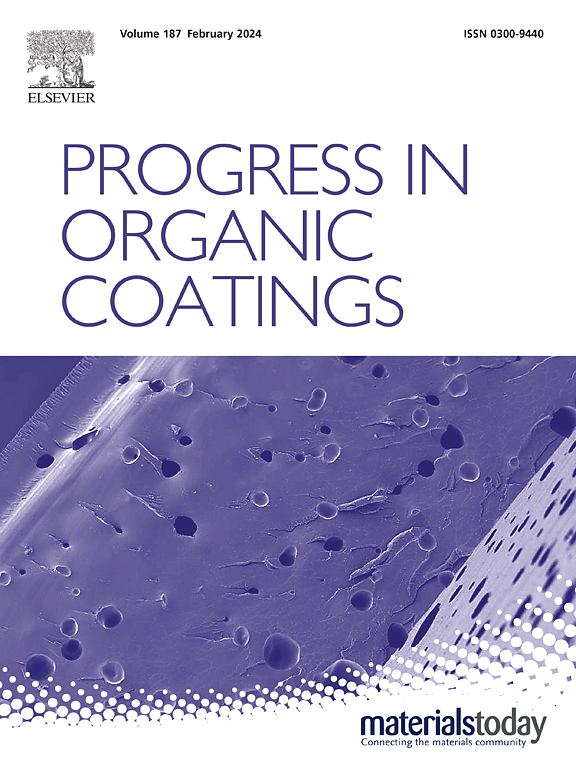Assessment of matting agent effect on polyurethane coatings' perceived blackness through geometric properties modeling: An AI approach
IF 6.5
2区 材料科学
Q1 CHEMISTRY, APPLIED
引用次数: 0
Abstract
This study investigates the effect of matting agent on the perceived blackness of polyurethane automotive finishes by examining their impact on geometric properties using an AI-based neural network model. Black polyurethane coatings were prepared with varying gloss levels by incorporating different amounts of matting agent. Observers ranked these samples based on perceived blackness using the pair comparison method. The data features included the colorimetric properties and geometric attributes of the black polyurethane panels, with visual scales obtained as target values. Various neural networks were employed: Single-Layer Neural Network for linear regression, Multi-Layer Neural Network, Deep Neural Network, and Dropout-Enhanced Deep Neural Network for non-linear regression. Feature selection was applied to eliminate irrelevant or redundant features. The findings indicated that the Multi-Layer Neural Network for non-linear regression, utilizing geometric features, achieved favorable evaluation metrics, including mean squared errors, and R2 values. Additionally, this model predicted the visual scale values more accurately compared to other neural network models. By simulating this behavior, the research effectively eliminates the need for time-consuming visual assessment experiments traditionally used for blackness evaluations in industrial settings. This method greatly simplifies the evaluation process, conserving both time and resources while maintaining reliable and precise assessments.
求助全文
约1分钟内获得全文
求助全文
来源期刊

Progress in Organic Coatings
工程技术-材料科学:膜
CiteScore
11.40
自引率
15.20%
发文量
577
审稿时长
48 days
期刊介绍:
The aim of this international journal is to analyse and publicise the progress and current state of knowledge in the field of organic coatings and related materials. The Editors and the Editorial Board members will solicit both review and research papers from academic and industrial scientists who are actively engaged in research and development or, in the case of review papers, have extensive experience in the subject to be reviewed. Unsolicited manuscripts will be accepted if they meet the journal''s requirements. The journal publishes papers dealing with such subjects as:
• Chemical, physical and technological properties of organic coatings and related materials
• Problems and methods of preparation, manufacture and application of these materials
• Performance, testing and analysis.
 求助内容:
求助内容: 应助结果提醒方式:
应助结果提醒方式:


